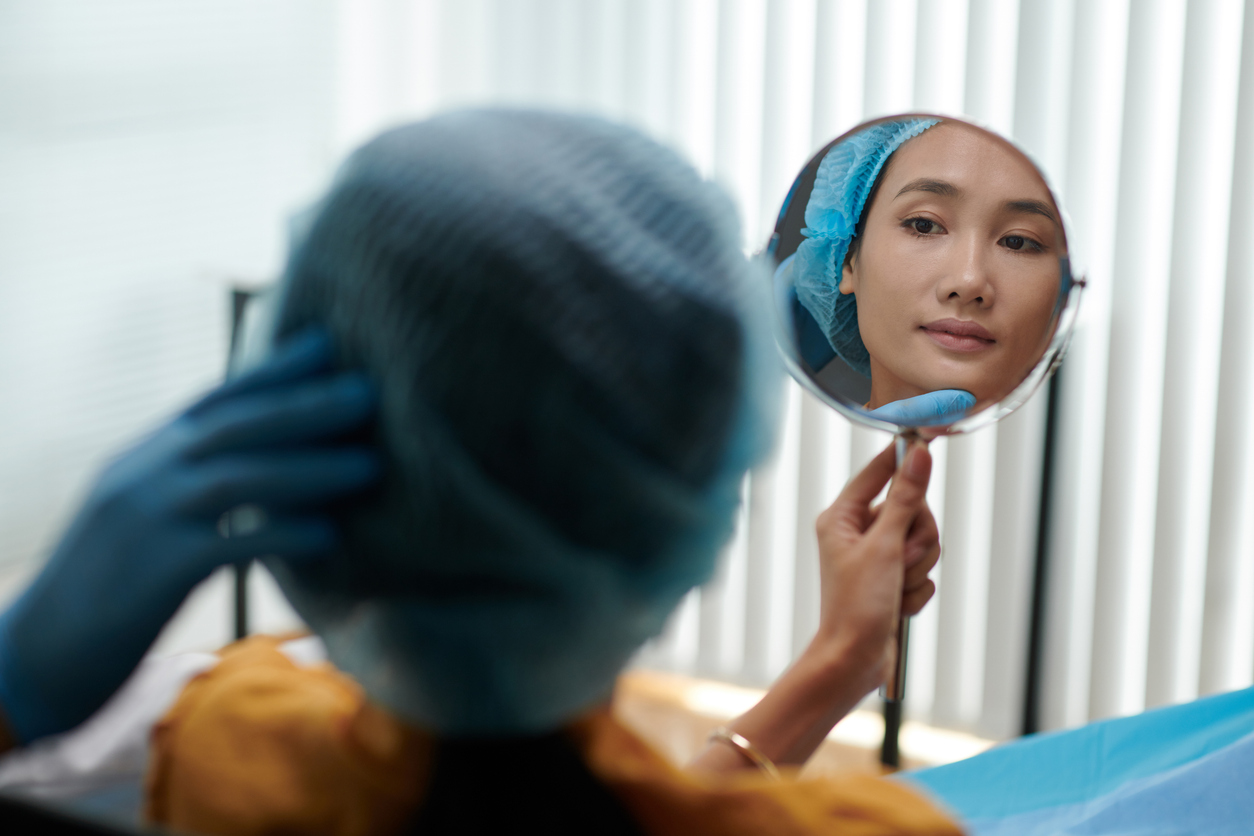Lip augmentation is one of the most popular cosmetic treatments out there. Just look around…

Are You a Good Candidate for a Beard Transplant?
Thin, patchy facial hair is a common problem among men. In one survey, 23.6% of men said they couldn’t grow a proper beard, making them feel less masculine.
There are plenty of reasons a person may find it difficult to grow a full beard, including:
-
Alopecia areata
Alopecia areata is a rare autoimmune disease that causes the body to attack hair follicles. When a man has alopecia, it results in thin, patchy beards and hair loss on other parts of the body.
-
Genetics
The most significant factor that determines beard growth is genetics. If the men in your family tend to have thin beards, it’s likely that you will, too.
-
Ethnicity
Race is another good determinant of beard growth. People from Mediterranean countries, for example, tend to grow fuller and thicker beards than other regions. Meanwhile, East Asian men generally have thinner facial hair growth compared to other ethnicities.
Apart from these factors, growing thick facial hair can also be a long, slow, and frustrating process. Because of the issues above, even natural remedies cannot help, and you still end up with a thin and patchy beard.
However, the good thing is that people who struggle with growing facial hair can achieve the full-bearded look through a beard transplant.
What is a Beard Transplant?
A beard transplant is a type of facial hair transplant to fill in patchy areas of beards, create sideburns and goatees, or construct a full beard.
Hair transplant specialists use hair from the back of the scalp, which matches the coarseness of beards, and transfers them onto the cheeks, jawline, and other parts of the face. This creates a natural look, and the results are permanent.
Are Beard Transplants Safe?
Like the doctors at Vargas Face & Skin Center, facial hair transplant specialists have the skills needed to ensure a safe beard transplant with the best results. However, like any procedure, beard transplants require a recovery period in which you may experience temporary side effects.
Among these side effects are:
- Swelling
- Redness
- Numbness
- Tightness
- Scabbing
The risks associated with a professional beard transplant are minimal and patients rarely experience the above-mentioned side effects for extended periods.
The Best Candidates for a Beard Transplant
Virtually anyone can get a beard transplant as it’s a completely safe procedure. In particular, though, the best beard transplant candidates are:
-
Patients who simply want a fuller beard, mustache, or sideburns
In general, people who get beard transplants are mostly those who have thin or patchy facial hair. If you find it difficult to grow a beard or mustache or you don’t have thick enough sideburns, then getting a beard transplant for purely cosmetic purposes is a popular choice.
-
Patients with facial hair loss because of an illness
Some illnesses affect facial hair growth either because of the nature of the diseases themselves or their treatment.
For example, facial hair loss is a common symptom of hypothyroidism, along with hair loss on your scalp and other parts of the body. Some sexually transmitted diseases, such as syphilis, may also cause facial hair loss.
Some of these illnesses will only cause temporary hair loss, while others may permanently make it difficult to grow fuller facial hair. If you’re experiencing the latter but want a beard, then you’re a good candidate for a facial hair transplant.
-
Patients with scarring in the beard region after traumatic events
Hair doesn’t naturally grow on scar tissue because there aren’t hair follicles in a scar. If you have major scarring in your beard area, that patch of skin will not be able to grow hair on its own. As such, you’re also a good candidate for a beard transplant.
Facial hair transplant specialists perform follicular unit transplantation (FUT) or follicular unit extraction (FUE). These procedures create openings in your scar tissue where hair follicles can be inserted, allowing hair to grow.
This allows you to cover your scar and achieve fuller facial hair at the same time.
-
Transgender patients
The abundance of facial hair indicates masculinity for many people. This is why growing a beard is a goal for many transgender males as they transition.
But while hormone replacement therapy can kickstart facial hair growth, it can still be difficult to achieve a full-bearded look. This is especially true if your biological family members also have sparse facial hair, indicating it is genetic.
If you can’t grow adequate facial hair on your own, then a beard transplant is an option that can get you the full facial hair you want.
Other Considerations for Facial Hair Restoration
 Apart from the different candidates mentioned above, there are also health considerations for those who want to undergo a beard transplant. This includes:
Apart from the different candidates mentioned above, there are also health considerations for those who want to undergo a beard transplant. This includes:
-
Age
There is no minimum age requirement for those who want to get a beard transplant. There are plenty of men, for example, who notice balding or thinning of facial hair in their late teens or early twenties.
-
Lifestyle
You need to be able to commit to a healthy lifestyle when getting a beard transplant. Eating healthy and avoiding stress is beneficial for your hair, helping improve the results of your procedure.
-
Health Condition
Before undergoing any surgery or medical procedure, make sure to consult with your physician or surgeon. This is especially important if have chronic health conditions or are taking medication that can adversely affect the results of your beard transplant.
What to Expect Post-Procedure
Candidates who successfully undergo a facial hair transplant must follow aftercare instructions correctly to minimize recovery time and discomfort while ensuring the best results.
Your doctor will provide detailed aftercare instructions, such as keeping the area from being wet in the first few days, avoiding activities that will strain your facial muscles, and keeping the area as clean as possible.
It’s also important to set realistic expectations. While a beard transplant may only take a few hours to perform, it can take up to three months to start seeing results while new hair strands grow where new follicles are transplanted.
Restore Your Facial Hair Safely
Vargas Face & Skin Center provides various hair transplant procedures, including beard transplants. We’ll help you restore your beard and grow it beautifully.
Schedule a consultation today.







